In today's blockchain security field, accurate and efficient on-chain investigation tools are essential for asset monitoring, risk prevention, and financial crime detection. Recently, the strongest detective in the entire blockchain @zachxbt shared his 25 commonly used on-chain tracking/investigation tools in a private Telegram channel. We have selected and sorted out 12 commonly used blockchain analysis tools, covering multi-chain data monitoring, cross-chain bridging, fund flow tracking, and tax profit and loss calculation functions, providing security researchers, law enforcement agencies, compliance teams, and investors with professional-level on-chain data analysis guides to help cope with increasingly complex blockchain security challenges.
1. Cielo | EVM-compatible wallet tracking and monitoring
Function Introduction:
Cielo focuses on wallet tracking and supports multiple blockchain platforms such as EVM-compatible chains, Bitcoin, Solana, Tron, etc. The tool not only monitors wallet activities and fund flows in real time, but also provides Smart Wallet list recommendations to help users quickly identify potential risks or abnormal behaviors.
Application scenarios:
- Monitor large fund transfers and analyze whale account behavior
- Identify suspicious addresses and prevent crypto scams
- Official website: https://cielo.finance
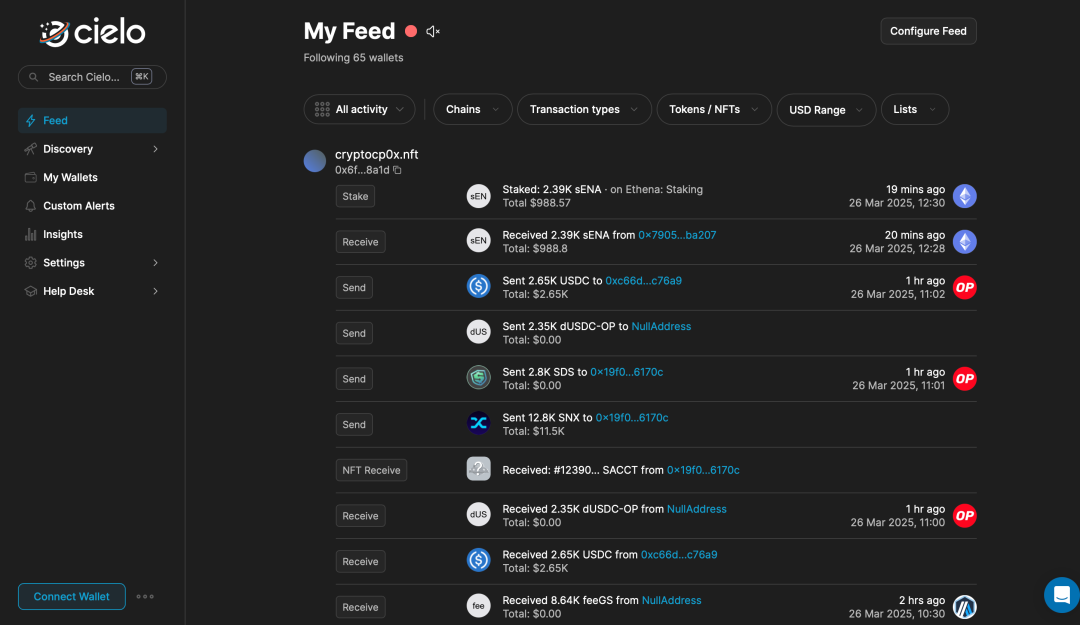
2. TRM Labs | On-chain intelligence platform to combat financial crime
Function Introduction:
TRM Labs is a leading blockchain intelligence platform that helps users track the flow of funds by graphically displaying address and transaction data. It has a wide coverage - supporting more than 70 million assets, covering 30 blockchain networks, and providing data support for both NFT and DeFi protocols. It is widely used in financial institutions, crypto companies and government departments, especially in detecting and investigating crypto financial crimes.
Application scenarios:
- Helping law enforcement agencies, exchanges, and financial institutions combat cryptocurrency crimes
- Monitoring OFAC (U.S. Treasury Department Sanctions List) related transactions
- Official website: https://trmlabs.com
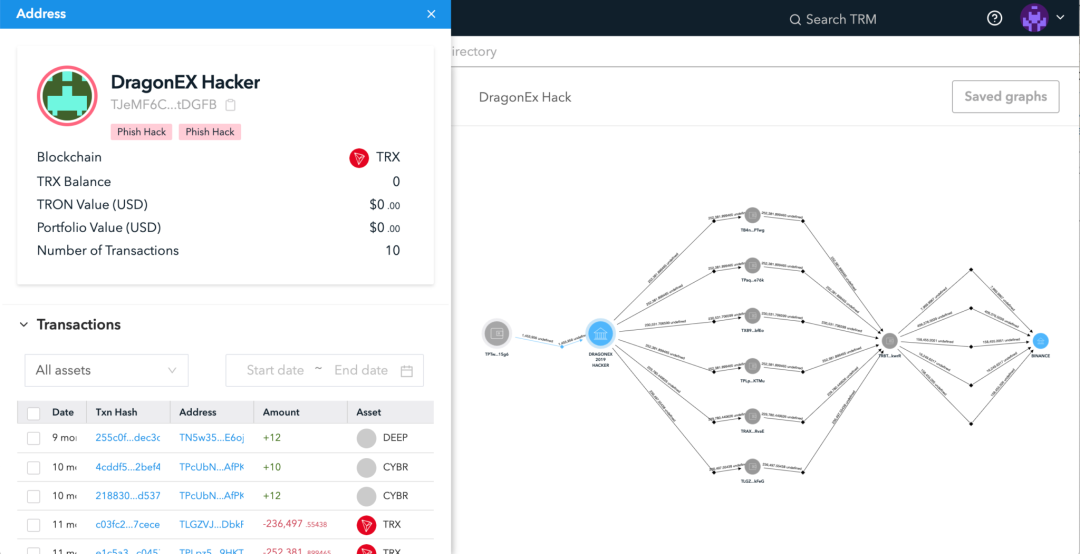
3. MetaSuites | Blockchain Data Enhanced Browser
Function Introduction:
MetaSuites, formerly known as MetaDock, was developed by BlockSec and is a blockchain browser enhancement tool based on Chrome extension. The tool provides intuitive data display such as capital flow diagrams and address labels, and integrates more than 30 Web3 and AI tools, greatly improving the efficiency of on-chain data analysis.
Application scenarios:
- Study DeFi protocols, analyze vulnerabilities and potential risks
- Enhanced blockchain browser functions to facilitate review of address behavior
- Official website: https://blocksec.com/metasuites
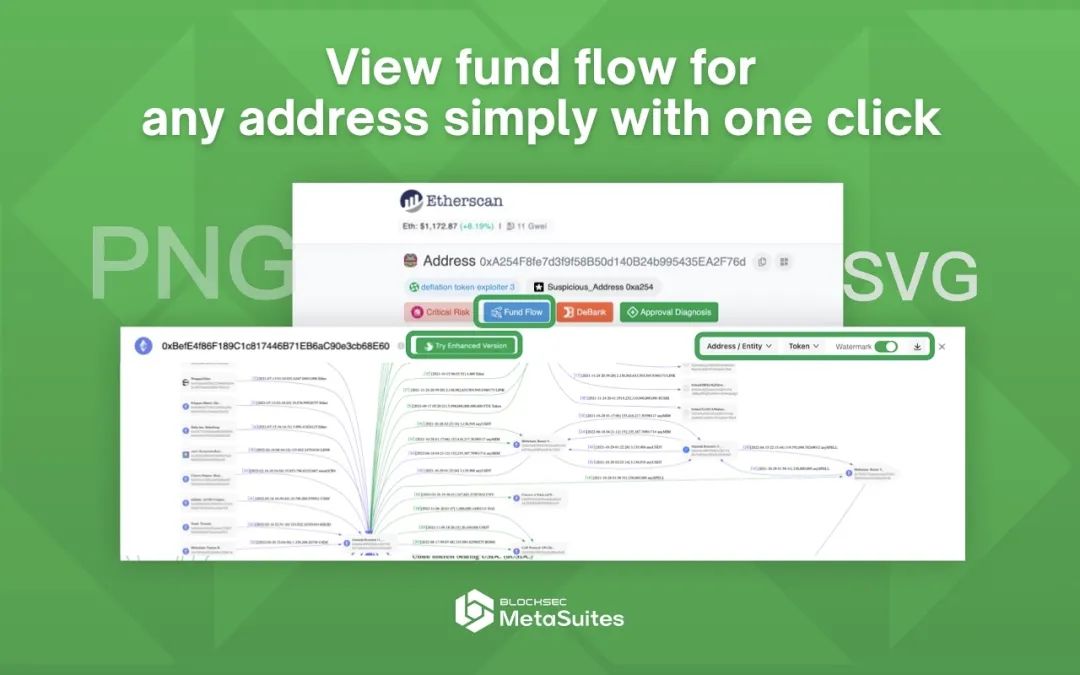
4. MetaSleuth | Retail user-friendly on-chain tracking tool
Function Introduction:
As an on-chain tracking platform for retail users, MetaSleuth is similar to TRM Labs, but has made targeted optimizations in terms of user experience and ease of operation. The tool supports cross-chain analysis, can track capital flows and identify high-risk addresses, and currently covers 13 blockchains including Bitcoin, Ethereum, Solana, etc., providing intelligent analysis and collaborative sharing functions for individual investors and small and medium-sized institutions.
Application scenarios:
- Individual investors and small and medium-sized institutions monitor wallet security
- Analyze hacker attack paths and lock abnormal transactions
- Official website: https://metasleuth.io
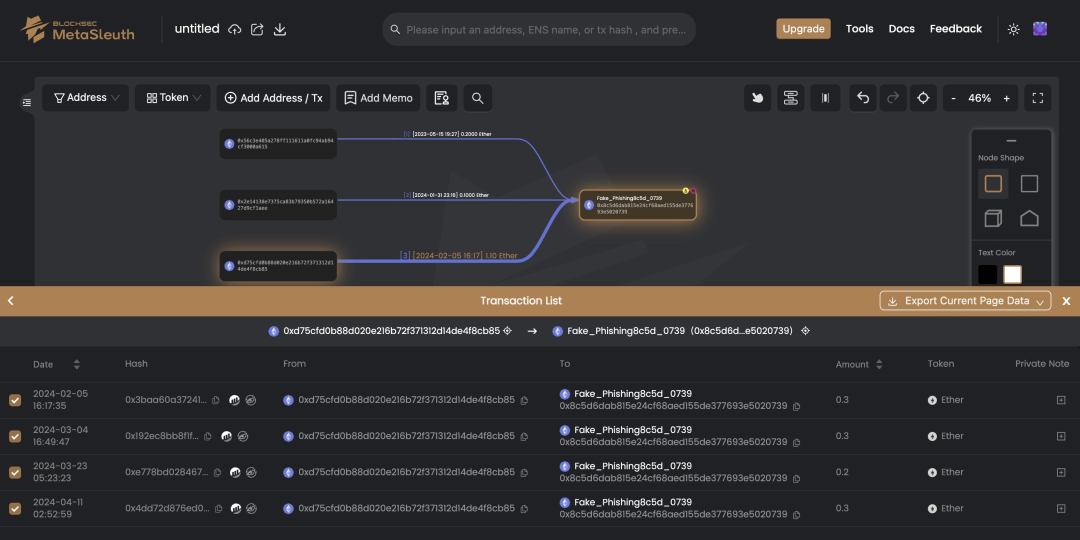
5. Arkham Intelligence | Full-chain fund tracking and data visualization
Function Introduction
Arkham is a comprehensive intelligence platform that integrates multi-chain browsers, entity tags, chart creation, and real-time alerts. It not only has a powerful address and entity database, but also supports transaction filtering and visualization operations. Users can use the API interface to conduct in-depth analysis of more than 50 blockchain data. Arkham's comprehensive functionality makes it a well-received on-chain investigation tool in the industry.
Application scenarios:
- Deeply explore the capital flow path and reveal hidden relationships
- Combine AI to identify potential risk locations
- Official website: https://arkhamintelligence.com
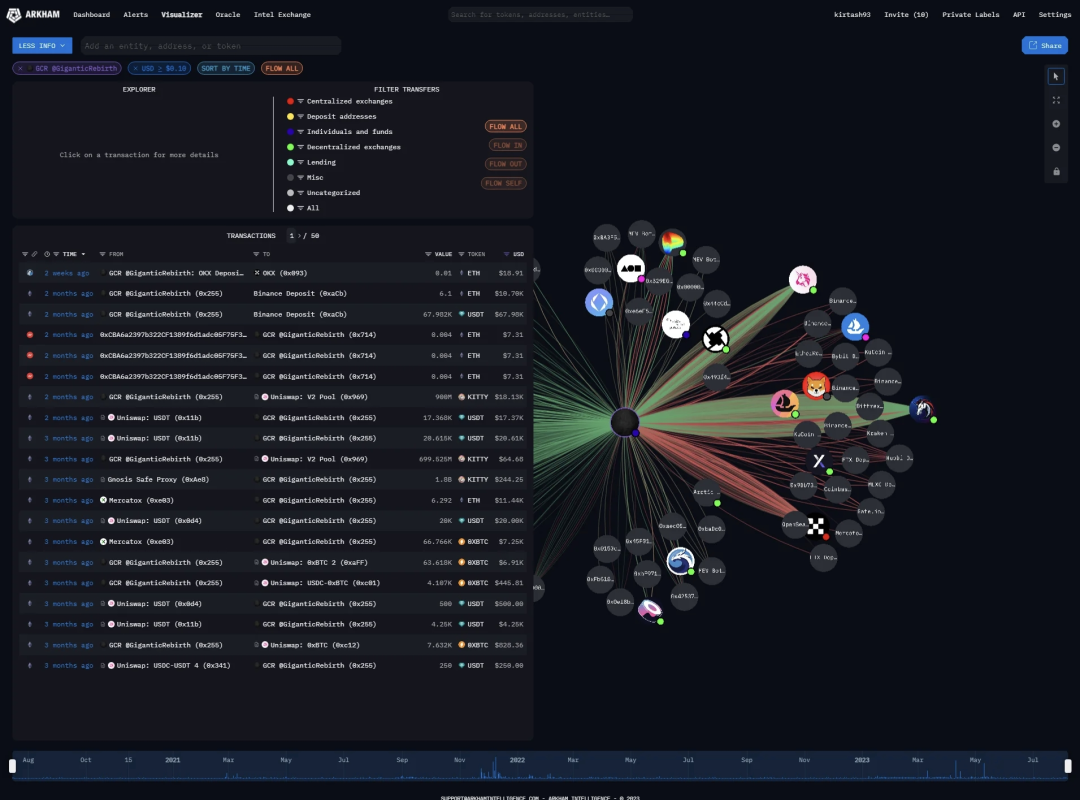
6. Etherscan / Solscan | The most powerful blockchain browser
Function Introduction:
Etherscan and Solscan are blockchain browsers for EVM-compatible chains and Solana, respectively. They provide detailed data such as transaction records, address information, smart contract code, and balance query, respectively supporting the transparency and data query needs of the Ethereum ecosystem and Solana network, and are indispensable tools for developers and researchers.
Application scenarios:
- Study smart contract vulnerabilities and analyze on-chain transaction behaviors
- Track hacker attack paths and assess asset security
- Official website: https://etherscan.io/https://solscan.io/
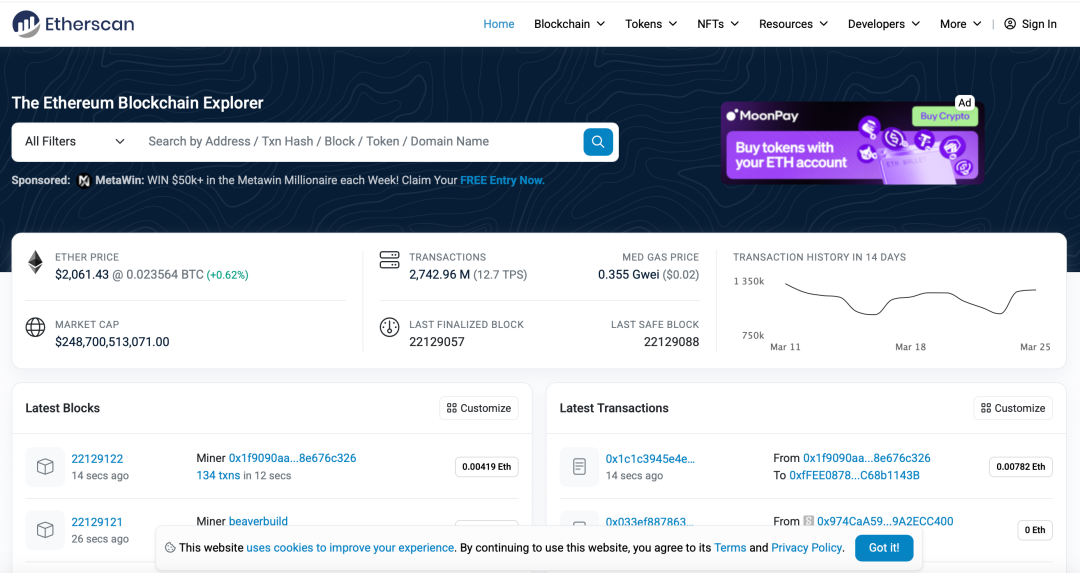
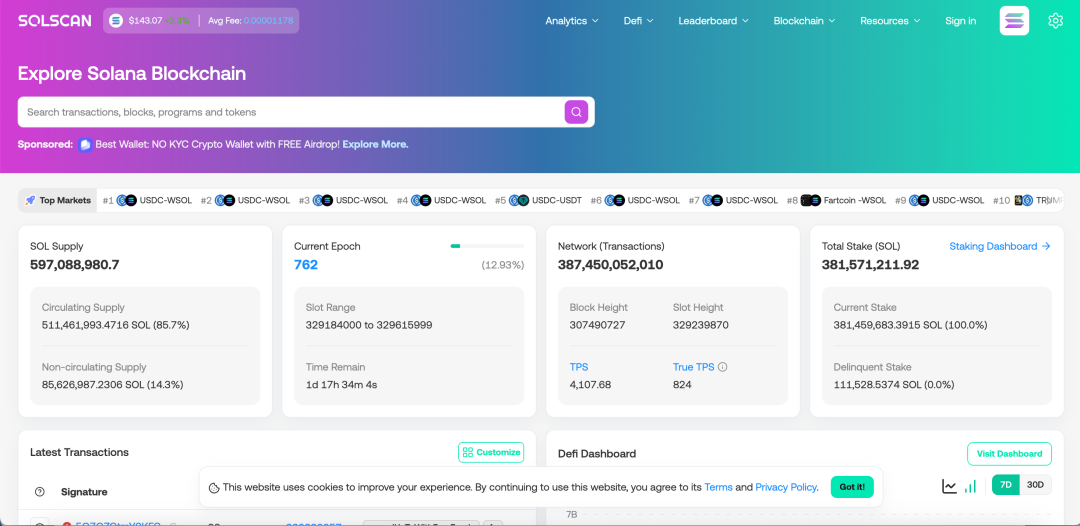
7. Blockchair | Bitcoin on-chain data search engine
Function Introduction:
Blockchair is a browser that focuses on Bitcoin chain data query. Users can use it to search and view detailed information of blocks, transactions and addresses. This tool not only supports Bitcoin, but is also compatible with other blockchain data queries and provides an API interface, which is suitable for Bitcoin transaction analysis and block data research.
Application scenarios:
- Studying the flow of funds on the Bitcoin chain
- In-depth analysis of BTC mining pool behavior
- Official website: https://blockchair.com
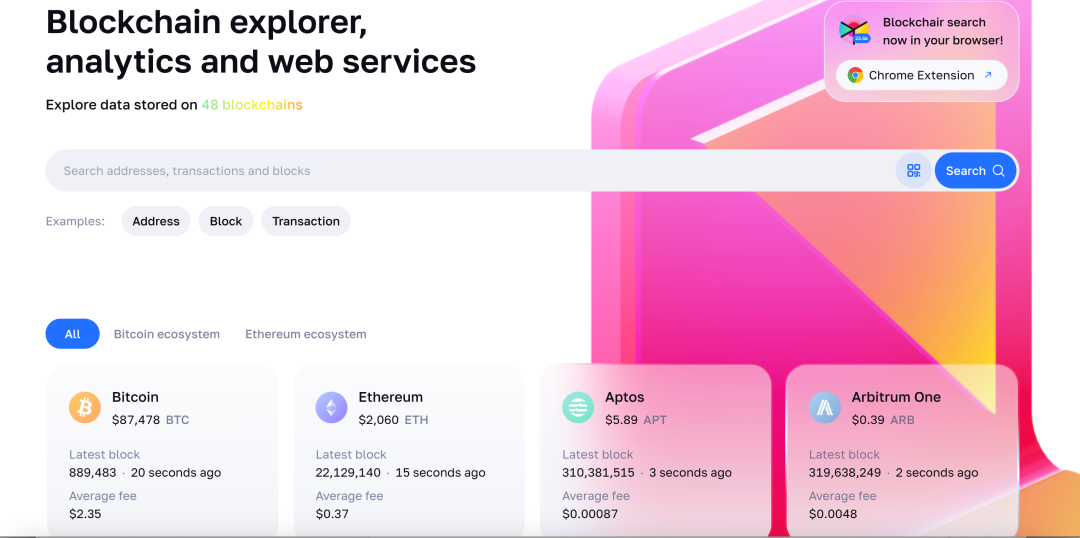
8. Range | USDC cross-chain fund flow tracking
Function Introduction:
Range provides a dedicated monitoring solution for CCTP (Cross-Chain Transfer Protocol) bridge transactions, mainly tracking the flow of USDC between ecosystems such as Ethereum, Solana and Cosmos. Real-time monitoring and transparent data feedback help users better understand cross-chain asset transfers and conduct in-depth analysis of DeFi liquidity.
Application scenarios:
- Identifying USDC arbitrage paths on multiple chains
- Analyze cross-chain transaction behavior and improve capital efficiency
- Official website: https://usdc.range.org
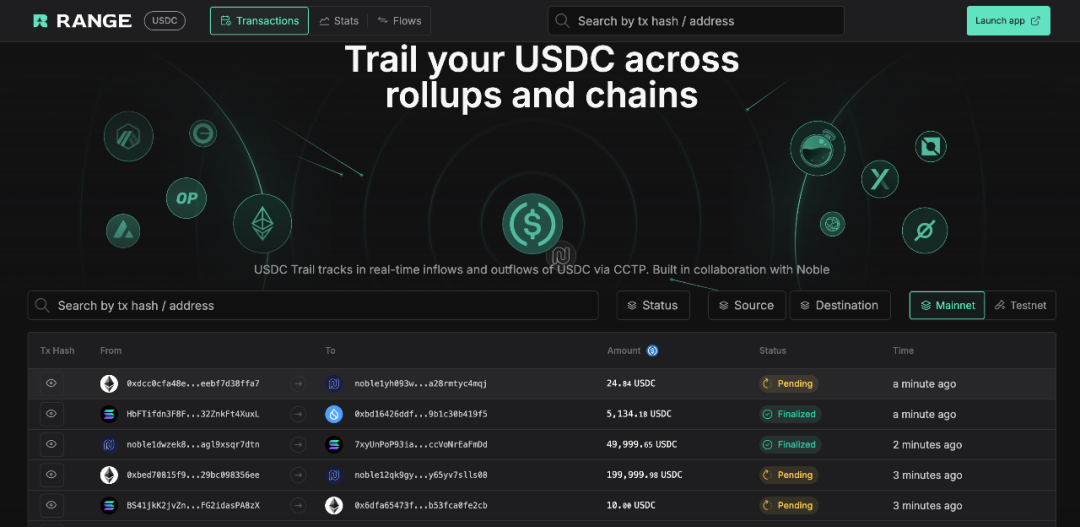
9. Pulsy | Cross-chain asset tracking aggregator
Function Introduction:
Pulsy is a bridge browser aggregator that helps users find the best transfer path by integrating cross-chain asset transfer data. With the analysis of real-time and historical data, this tool provides a more efficient monitoring solution for cross-chain transactions, especially for asset management in a multi-chain environment.
Application scenarios:
- Research cross-chain arbitrage opportunities
- Monitoring DeFi fund flows
- Official website: https://explorer.pulsy.app/bridges
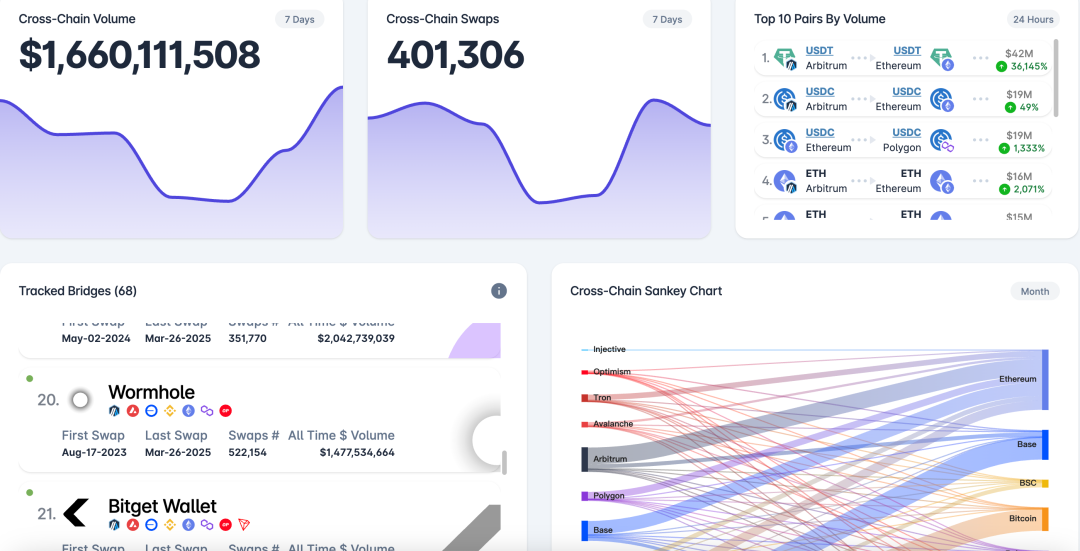
10. Socketscan | EVM-compatible bridge monitoring
Function Introduction:
Socketscan focuses on monitoring bridge transactions between EVM-compatible chains, providing a unified platform for users to query the detailed status of transaction hashes or addresses. It supports transaction tracking of multiple chains such as Ethereum, Optimism, Arbitrum, etc., and provides clear data visualization and real-time monitoring for cross-chain asset transfers.
Application scenarios:
- Monitor cross-chain fund flows within the EVM ecosystem
- Track bridge transactions and warn of abnormal fund flows
- Official website: https://socketscan.io
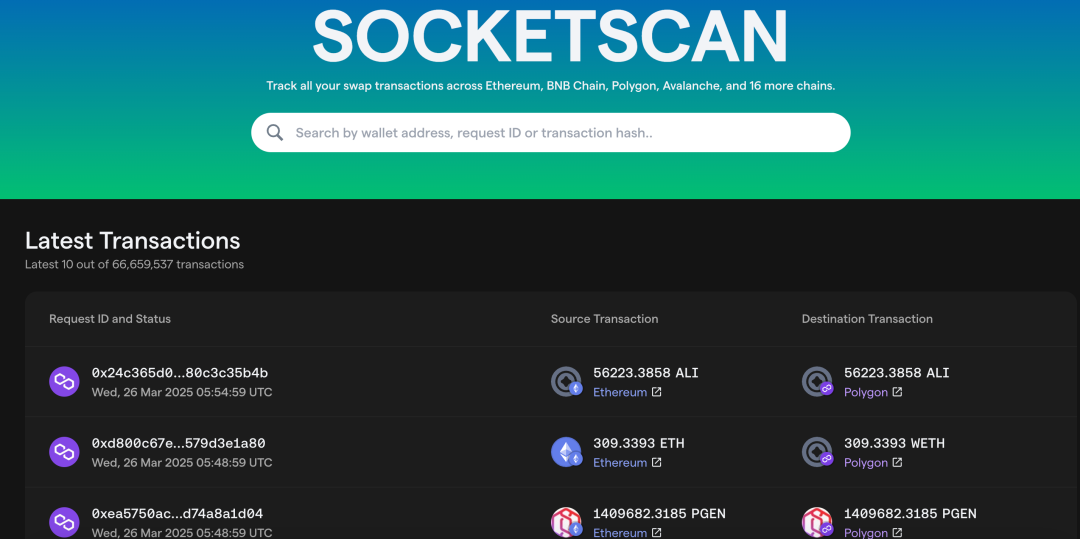
11. Dune | Open on-chain data analysis platform
Function Introduction
Dune is one of the most popular and influential blockchain data analysis platforms. Users can use SQL statements to query massive amounts of on-chain data, and customize and share various data dashboards. Its open platform encourages the data creator community to continue to innovate, and is an ideal choice for deep data mining and on-chain trend analysis.
Application scenarios:
- Monitoring DeFi Project KPI Indicators
- Analyzing NFT market trends
- Official website: https://dune.com
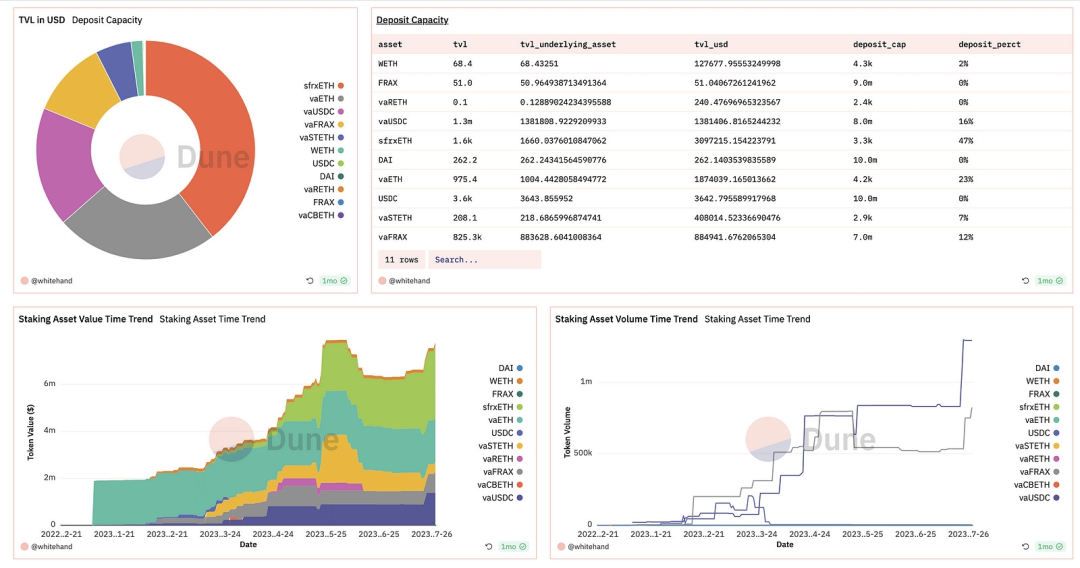
12. CryptoTaxCalculator | Crypto Tax Calculation & Profit and Loss Analysis
Function Introduction:
CryptoTaxCalculator is designed for cryptocurrency investors to assist users in completing tax declarations and investment reviews by automatically calculating trading profits and losses (PNL). The platform not only supports automatic tax report generation, but also provides detailed profit and loss analysis to help users achieve tax compliance and asset management.
Application scenarios:
- Automatically generate tax returns to reduce manual calculation time
- Track asset returns and achieve compliant investment
- Official website: https://cryptotaxcalculator.io
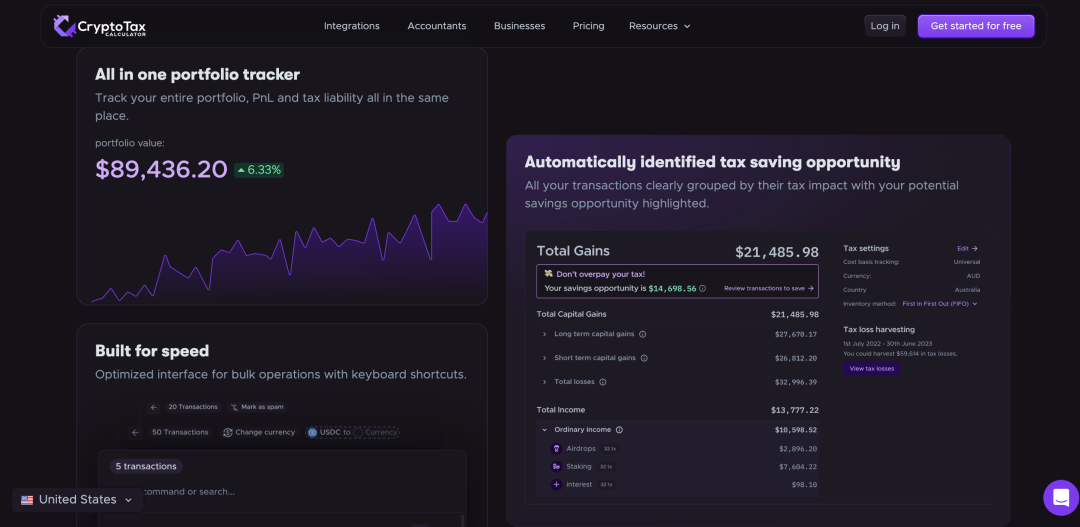
Conclusion
The above 12 tools cover multiple dimensions such as wallet tracking, fund flow monitoring, cross-chain bridging, data visualization and tax management, reflecting the latest progress in data transparency, cross-chain monitoring and real-time intelligence analysis in the current blockchain security field. Whether you are an institutional-level financial security team or a researcher focusing on blockchain compliance, these tools can provide you with efficient and accurate on-chain data analysis and risk prevention and control support. Combined with actual business scenarios, choosing the right tools will significantly improve your security protection capabilities and data analysis level.











